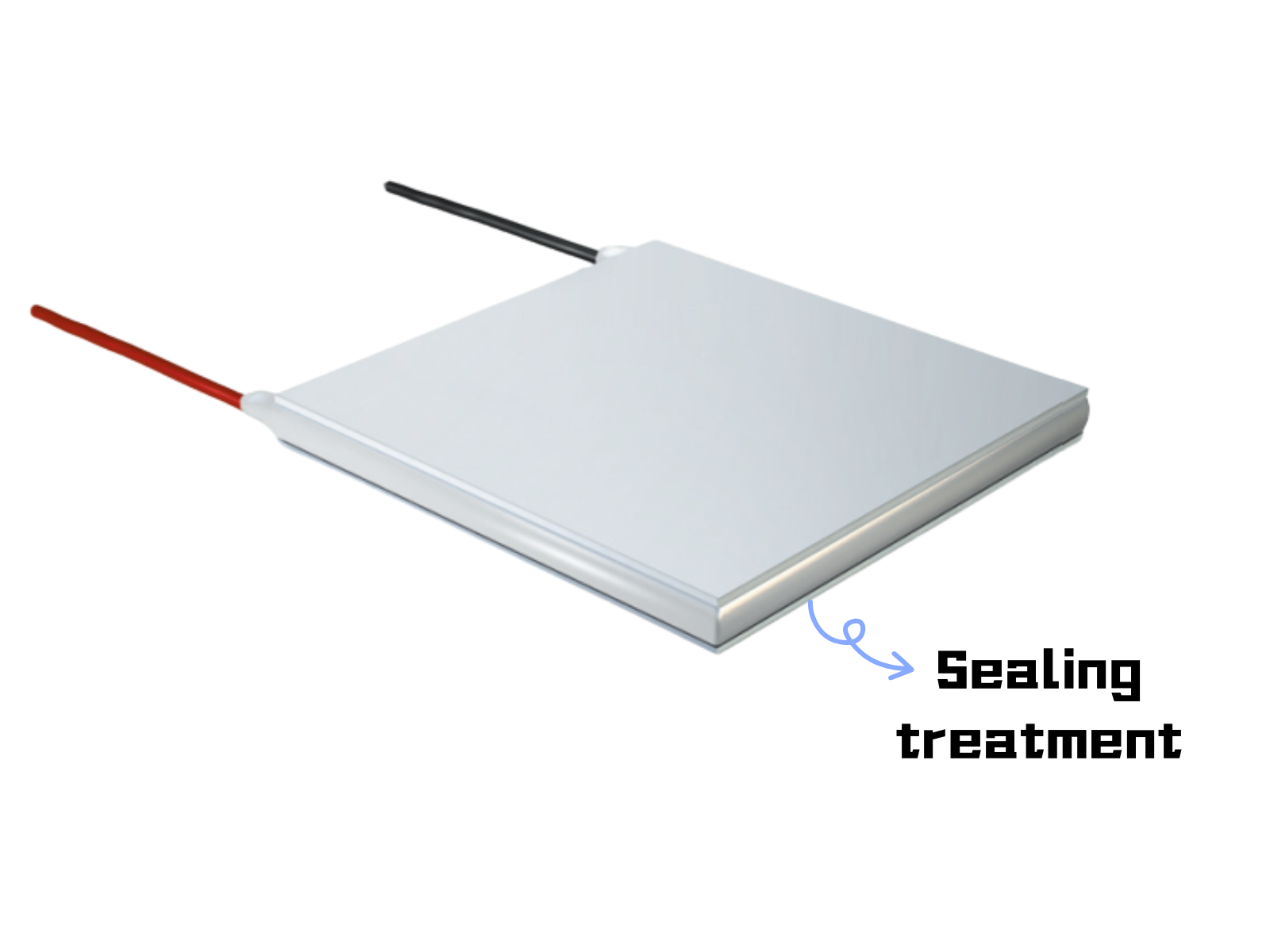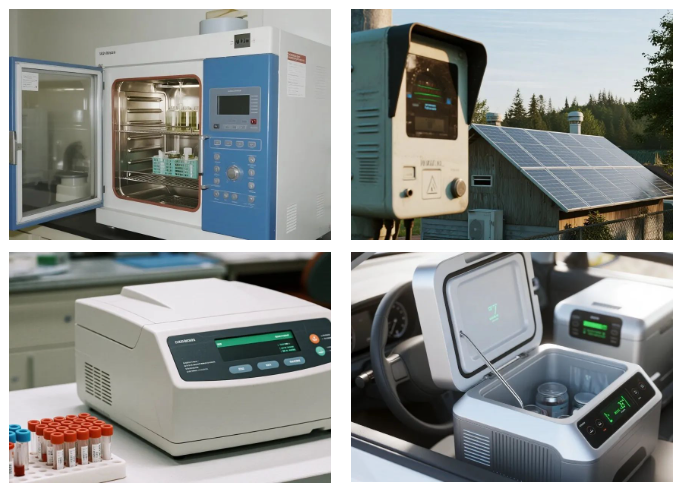What is TEC sealant? You must know these 4 functions and 5 scenarios!
The role of TEC sealing glue in TEC module
Sealing is a process that applies a layer of sealing material (sealing) to the surface of electronic components or modules to provide protection and enhance performance. It is directly related to the stability, life and reliability of semiconductor refrigeration modules. The following are the four major functions of sealing in TEC modules:

1.Isolate water vapor and corrosive gases
When the semiconductor refrigeration chip is working, if the cold end temperature is lower than the dew point temperature, the water vapor in the air will condense into water droplets. When water vapor or corrosive gas (such as salt in a humid environment, industrial waste gas) enters the interior of the TEC, it will cause the semiconductor material to deteriorate and the copper electrode to corrode. In severe cases, it may also cause a short circuit (the green part in the figure below is the corroded part), affecting the refrigeration efficiency and service life. Through the sealing treatment, a sealing layer is formed around the semiconductor refrigeration chip to block the intrusion of external water vapor and gas. It can prevent short circuits and extend service life.
2. Stabilize the internal structure
The semiconductor particles inside the TEC module are connected in series through copper electrodes. Since the semiconductor particles are brittle, they are easily broken when subjected to vibration, impact or external force during installation and use. The sealing treatment plays a role of buffering and reinforcement, preventing the internal components from breaking or delaminating when subjected to external force impact.
3. Avoid heat and cold exchange affecting efficiency
The working principle of semiconductor cooling chip is that the cold end absorbs heat and the hot end dissipates heat. If the sealing material is not used for sealing, air will form convection between the cold and hot ends, causing heat to "short-circuit" and flow back, reducing the overall cooling efficiency. Sealing can block invalid heat exchange, allowing heat to be transferred along the specified path, and improving the cooling performance of TEC.
4. Insulation protection
After the copper electrode pads of the semiconductor cooling chip are welded with wires, if they are exposed to the external environment without protection, circuit abnormalities may occur over time due to moisture, dust accumulation and other problems. Therefore, we need to use sealing materials to isolate and protect the semiconductor cooling chip. Especially in high temperature and high humidity environments, it can ensure stable operation of the circuit.
2. Limitations of using sealing glue in TEC modules
Although sealing glue can help improve the reliability of semiconductor refrigerators and extend their service life, its application will also bring certain performance loss and cost increase problems.
Performance DTmax decreases
After sealing, the key performance indicator of TEC, DTmax (maximum temperature difference), will usually decrease. When using high-quality sealing materials, it will generally decrease by 3~5℃; when using low-quality sealing materials, it will generally decrease by 5~8℃. In order to reduce performance loss, you can consider not performing sealing in the following scenarios:
① Dry and clean indoor environment
② Short-term testing or temporary use of products
③ TEC whose cold end temperature is always higher than the dew point (no condensation risk)
④ Optical communication facilities with high performance requirements and no vibration or corrosion risks
2. Increased production costs
The introduction of the sealing process not only increases the purchase cost of sealants, but also increases labor costs and equipment investment. In order to ensure product quality, it is necessary to add quality inspection and insulation testing links, which further increases the inspection cost. In addition, the supporting equipment such as pallets, shelves, ovens, etc. required in the curing process of the sealant also brings additional cost investment.
3. Extended production cycle
Due to the addition of the sealing process, the overall production flow time of the product is also extended. If epoxy glue is used to seal the semiconductor cooling chip, it usually takes 24 hours for it to completely cure naturally, which will to a certain extent extend the production cycle and affect the delivery efficiency of the product.
Typical application scenarios of TEC sealing glue

In summary, in order to reduce performance loss and ensure on-time delivery of products, TEC may not be sealed with glue in some scenarios. However, in the following application scenarios, sealing plays an indispensable role:
1. Wet or high humidity environment
This includes small kitchen refrigerators, laboratory thermostats, outdoor monitoring equipment, and seaside electrical cabinets. When the water vapor content in the air is high, condensation is easy to form on the cold end. To prevent moisture from penetrating and causing internal moisture, the moisture-proof performance of the TEC module must be improved through sealing treatment.
2. Environment with corrosive substances
This includes industrial cooling (such as chemical equipment, electroplating tank cooling), medical equipment (contact with disinfectant water), seaside electrical facilities and other scenarios. In such scenarios, the TEC module may be exposed to acidic and alkaline gas or liquid environments, which poses a risk of chemical corrosion. Sealing treatment can effectively isolate corrosive media, improve the protection performance of the module, and extend its service life.
3. Equipment that requires long-term stable operation
Including laser cooling systems, semiconductor testing instruments, medical PCR instruments, thermoelectric generators (TEGs), etc. These devices have high requirements for the life and reliability of TEC. Sealing treatment can enhance the stability of the internal structure and slow down the aging of materials, thereby extending the service life and reducing the maintenance frequency.
4. Scenes with vibration or impact
Including vehicle refrigeration systems (such as seat temperature control, vehicle refrigerators, hot and cold cup holders), electric vehicle battery temperature control systems, portable insulin detectors and other equipment. Such equipment is easily affected by vibration during use. Sealing the internal structure with glue can effectively improve the anti-vibration performance and prevent component damage.
5. The cold end temperature is lower than the dew point
When the TEC cold end temperature is lower than the ambient dew point (such as cooling electronic components to below 0°C), water vapor in the air penetrates into the TEC module, which may cause a short circuit or electrical failure. In this low temperature environment, sealing is a necessary protective measure to ensure the stable operation of the TEC and prevent moisture damage.
In this issue, we have focused on the main role, limitations and typical application scenarios of sealing treatment in TEC modules. In the next issue, we will continue to introduce common sealing materials and their performance differences. Follow us and see you next time!



